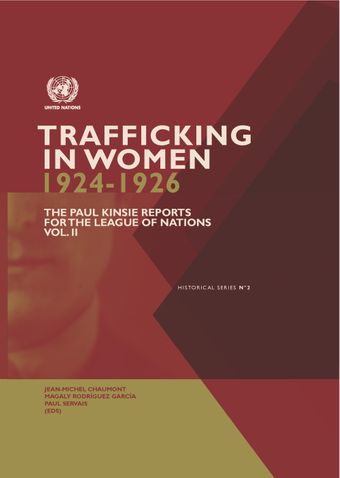Prostitution in Alexandria, Egypt

- مؤلف: Nefertiti Takla
- العنوان الرئيسي: Trafficking in Women (1924-1926) , pp 6-12
- تاريخ النشر: يوليو ٢٠١٧
- DOI: https://doi.org/10.18356/aa63007e-en
- Language: الإنجليزية
The construction of the Mahmudiyya Canal in 1820 gradually transformed Alexandria, Egypt, into a bustling Mediterranean port city that attracted migrants with promises of fortune and social mobility. Over the next 30 years, the population of the city soared from 12,000 to 104,000, reaching over 320,000 by the end of the century. Given the high degree of mobility and anonymity in that rapidly expanding city, prostitution soon became a profitable economic venture. Throughout most of the nineteenth century, prostitution in Alexandria was tolerated yet informally relegated to the social and geographic margins of the city by state officials and local communities. That practice of unofficial zoning gave rise to the formation of red-light neighbourhoods in Kom al-Nadura, Kom Bakir and Al-Tartushi, which were roughly within the boundaries of the Al-Labban district of Alexandria. Despite efforts to isolate sex workers, some women navigated the boundary between respectability and abjection by engaging in prostitution temporarily and covertly, plying their trade outside the boundaries of red-light districts.
-
From This Site
/content/books/9789210601566s001-c001dcterms_title,dcterms_subject,pub_keyword-contentType:Journal -contentType:Contributor -contentType:Concept -contentType:Institution105


